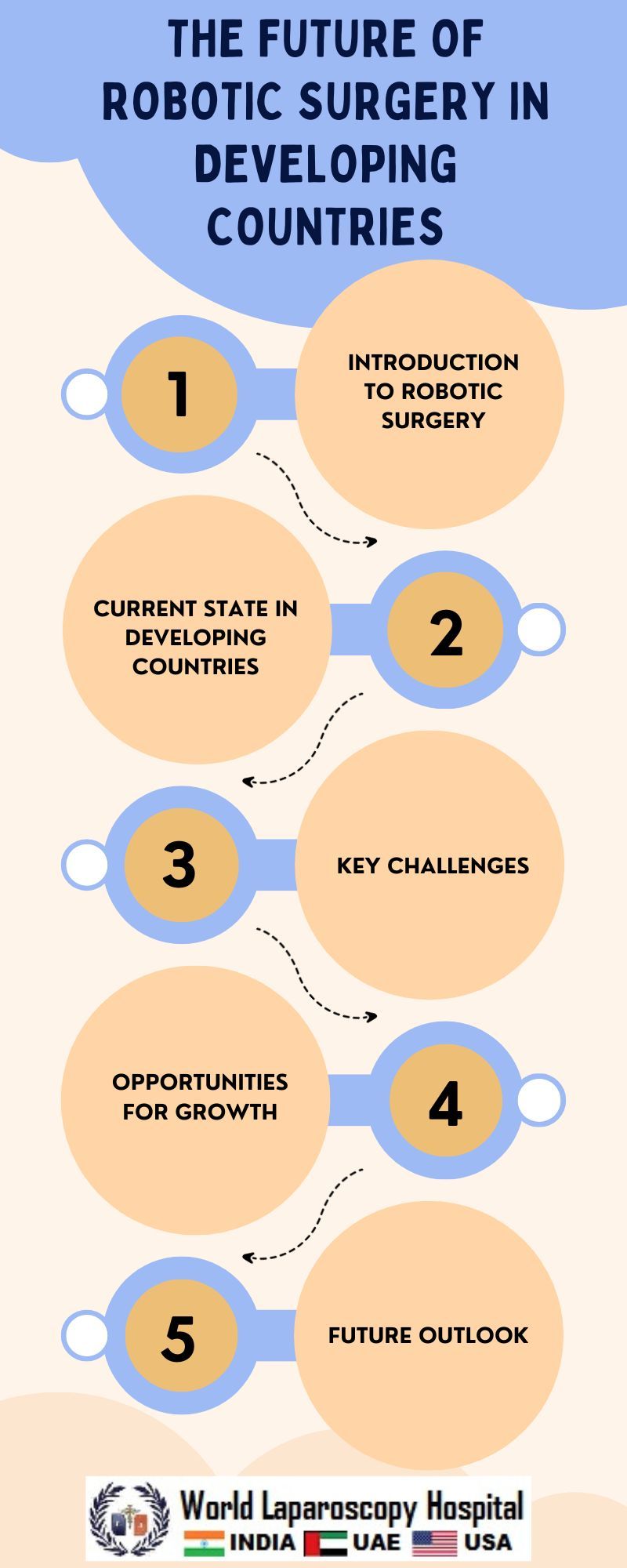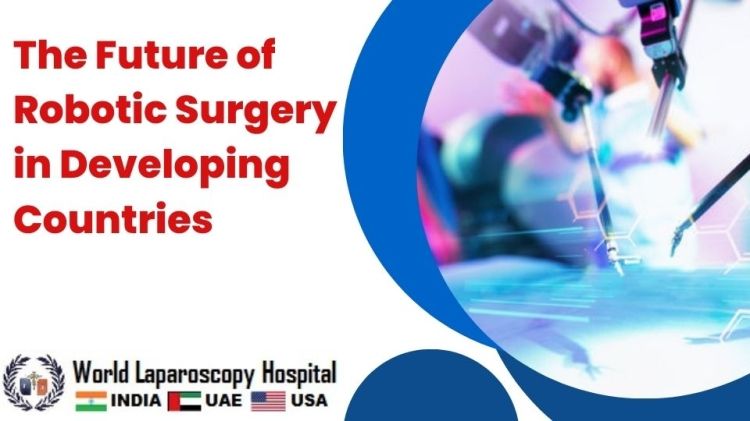The Future of Robotic Surgery in Developing Countries
Introduction:
In recent years, technological advancements have reshaped the landscape of healthcare, with robotic surgery emerging as a transformative force. While these cutting-edge technologies have primarily been associated with developed nations, the future of robotic surgery in developing countries is gaining attention for its potential to revolutionize healthcare accessibility and outcomes. This article delves into the current state of robotic surgery in developing countries, the challenges they face, and the promising future that lies ahead.

The Current Landscape:
Limited Access to Advanced Surgical Techniques:
Developing countries often grapple with inadequate medical infrastructure and a shortage of skilled healthcare professionals. The lack of access to advanced surgical techniques contributes to higher mortality rates and increased complications in these regions.
High Costs and Resource Constraints:
Traditionally, robotic surgical systems have been prohibitively expensive, posing a significant barrier to their adoption in developing countries. The high initial costs, coupled with ongoing maintenance expenses, make it challenging for resource-constrained healthcare systems to integrate such technologies.
Surgeon Training and Skill Development:
Robotic surgery requires specialized training for surgeons to operate these sophisticated systems effectively. In developing countries, the limited availability of training programs and educational resources poses a hurdle to the widespread adoption of robotic surgery.
Overcoming Challenges:
Cost Reduction and Affordability:
As technology evolves, efforts are being made to develop more affordable robotic surgical systems. Innovations in engineering and manufacturing processes aim to bring down the costs, making these technologies more accessible to healthcare facilities in developing countries.
Telemedicine and Remote Assistance:
Robotic surgery's future in developing countries lies in its potential for remote assistance. Telemedicine platforms allow experienced surgeons from around the world to provide guidance and support during procedures, enabling local healthcare professionals to enhance their skills and deliver better patient outcomes.
Collaborative Initiatives and Partnerships:
International collaborations and partnerships between developed and developing countries are crucial for overcoming challenges. Initiatives that involve sharing expertise, knowledge transfer, and technology exchange can accelerate the integration of robotic surgery into healthcare systems in developing nations.
The Promising Future:
Enhanced Surgical Precision:
Robotic surgical systems offer unparalleled precision, minimizing the risk of human error during procedures. This capability is especially valuable in complex surgeries, where precision is critical for successful outcomes. The future holds the promise of improved patient safety and reduced post-operative complications.
Increased Accessibility to Specialized Healthcare:
The integration of robotic surgery in developing countries can bridge the gap in access to specialized healthcare services. Patients who previously had to travel long distances or even abroad for advanced procedures can now receive cutting-edge treatments closer to home.
Skill Development and Capacity Building:
Investments in training programs and educational initiatives are crucial for building a skilled workforce capable of harnessing the potential of robotic surgery. The future entails a focus on empowering local healthcare professionals with the knowledge and expertise needed to utilize these technologies effectively.
Addressing Unique Healthcare Challenges:
Robotic surgery has the flexibility to address specific healthcare challenges prevalent in developing countries. For example, remote and rural areas can benefit from teleoperated robotic systems, allowing expert surgeons to perform procedures without the need for physical presence.
Case Studies:
Successful Implementation in Developing Countries:
Highlighting specific case studies where robotic surgery has been successfully implemented in developing countries can serve as inspiration and provide practical insights. Examining instances of overcoming challenges, achieving positive patient outcomes, and improving healthcare infrastructure will showcase the potential impact of these technologies.
Lessons Learned from Challenges:
Examining instances where implementation faced hurdles and analyzing the lessons learned can guide future endeavors. Understanding the unique challenges and adapting strategies accordingly will contribute to more effective and sustainable integration of robotic surgery in developing countries.
Conclusion:
The future of robotic surgery in developing countries holds immense promise for transforming healthcare delivery. As technology becomes more affordable, collaborative efforts increase, and training programs expand, these nations can leverage robotic surgery to overcome existing challenges. With a focus on accessibility, affordability, and skill development, the integration of robotic surgery has the potential to elevate healthcare standards, saving lives and improving the overall well-being of communities in developing countries.






